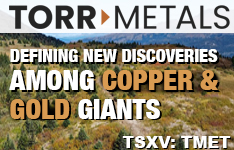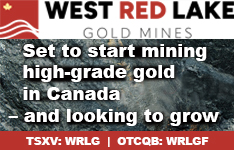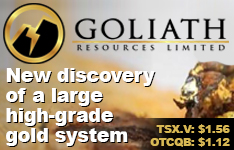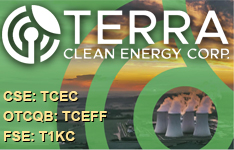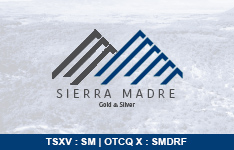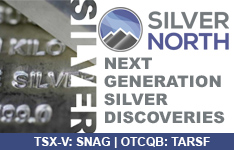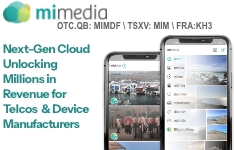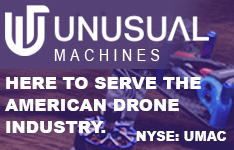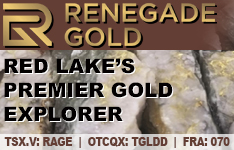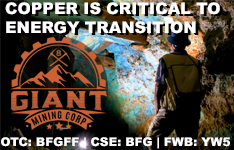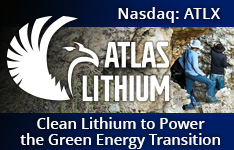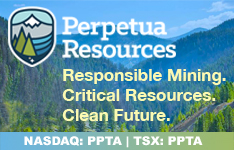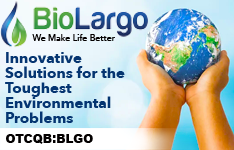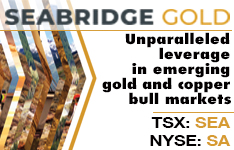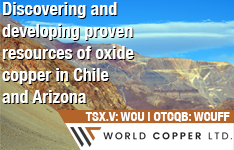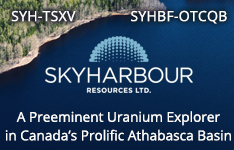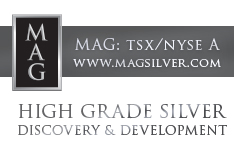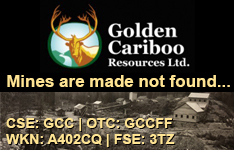Copper Fox Metals Inc. (CUU:TSX.V; CPFXF:OTCQX; HPR:FRA) has announced the completion of a preliminary geometallurgical model for its 100%-owned Van Dyke in-situ copper recovery (ISCR) project in the Globe-Miami mining district of Arizona. Conducted through its wholly owned subsidiary Desert Fox Van Dyke Co., the study was carried out by Samuel Engineering and is a key step in advancing the project toward a prefeasibility study.
The company previously released an updated mineral resource estimate and a preliminary economic assessment (PEA) in 2020, based on a copper price of US$3.15 per pound. That PEA outlined a conceptual ISCR operation producing 85 million pounds of Grade A copper cathode annually using solvent extraction and electrowinning (SX/EW) technology. At the time, the study indicated an after-tax net present value (NPV) of US$645 million at a 7.5% discount rate and an internal rate of return (IRR) of 43%, with an initial capital cost of US$290.5 million.
The new geometallurgical model identifies three key components necessary for a prefeasibility-level investigation: mineralogical domain delineation, identification of metallurgical data gaps, and a framework for future testwork. According to Copper Fox President and CEO Elmer B. Stewart in the news release, the model provides "greater certainty on the metallurgical variability across the Van Dyke deposit" and lays out the scope, timing, and cost requirements for further studies.
The mineralogical domains defined in the Van Dyke deposit align with typical supergene copper systems, where oxide and transition zones are the primary focus. Deeper zones exhibit sporadic occurrences of chalcopyrite and pyrite, consistent with hypogene mineralization.
Testwork to date has included eight pressure leach tests conducted in 2014 and 65 bottle roll leach tests completed in 2023, targeting material from drill holes within the initial seven-year leaching plan as defined in the 2020 PEA. These tests were spatially linked to the mineralogical domains and the project's 2020 resource block model.
Benchmarking with data from similar copper deposits in Arizona was used to evaluate mineral processing risks and support future metallurgical strategies.
Copper Sector: Electrification Demand Meets Supply Constraints
According to an August 11 report from UBS, the firm maintained a positive outlook on the copper market and forecasted prices to remain above US$10,500 per metric ton by mid-2026. UBS pointed to a continuing supply deficit and noted that "any further price pullbacks should be shallow and present buying opportunities."
\The report explained that recent U.S. tariffs introduced on August 1 specifically targeted semi-finished copper products and copper-intensive derivatives, while excluding cathodes and input materials such as ores and concentrates.
"Advancements at both Van Dyke and Eaglehead continue to strengthen our conviction in CUU's pipeline, as the recent string of announcements across its portfolio further de-risks the company and positions it for meaningful growth and project advancement," Ben Pririe of Atrium Research wrote.
On August 23, Invest AI reported that global copper demand was projected to reach US$339.95 billion by 2030, largely driven by the electrification of transportation, clean energy infrastructure, and growth in AI-related data centers.
The report stated that "copper demand from renewables and EVs was expected to grow at a 6.5% compound annual growth rate (CAGR) from 2025 to 2030," and cited the International Energy Agency's estimate that global copper consumption could double by 2040.
CoinSage also flagged geopolitical risk in key producing nations and supply chain instability as significant headwinds. It noted that "the U.S. has imposed a 50% tariff on copper imports," which contributed to panic buying and inventory shifts earlier in the year.
Crux Investor, in an August 30 sector analysis, identified three forces behind copper's structural demand growth: global electrification, AI infrastructure, and rising consumer demand in developing regions. The report stated that "a single electric vehicle contains four times more copper than a conventional car," while offshore wind and data center construction were creating new and persistent demand categories.
On the supply side, Crux highlighted challenges including declining ore grades, deepening deposits, and increasingly complex permitting timelines.
It also referenced capital reallocation by major producers from developed regions to South America, citing permitting complexity and cost pressures as contributing factors. Crux concluded that copper's designation as a critical mineral in the United States signaled longer-term policy support, even as immediate regulatory barriers remained in place.
Analysts Signal Confidence in Copper Fox's Growth Pipeline
On August 28, Ben Pririe of Atrium Research maintained a Buy rating and CA$0.50 per share target price on Copper Fox Metals Inc., citing continued project advancement and de-risking efforts across the company's portfolio. According to Atrium, "advancements at both Van Dyke and Eaglehead continue to strengthen our conviction in CUU's pipeline, as the recent string of announcements across its portfolio further de-risks the company and positions it for meaningful growth and project advancement."
The firm described the completion of the Preliminary Geometallurgical Model (PGM) at the Van Dyke in-situ copper recovery project as a significant milestone. It noted that the PGM "achieved three critical objectives to support an updated geometallurgical model" by defining mineralogical zones, identifying data gaps, and setting future testing recommendations. Atrium referred to Van Dyke's oxide and transition zones as "the primary focus for ISCR due to their favorable metallurgical properties."
Pirie also highlighted the Eaglehead project's potential, following the company's announcement of a 2.8-kilometer-long chargeability anomaly identified by a recent geophysical survey. The firm stated that the results "suggest drilling has only tested the top of a much larger porphyry system," adding that this reinforced the project's "district scale."
Atrium reiterated the strong economic indicators from the Van Dyke 2020 Preliminary Economic Assessment, which outlined a 17-year mine life and an after-tax NPV of US$645 million with an internal rate of return of 43.4% and a 2.1-year payback at a copper price of US$3.15 per pound. The research note concluded that Copper Fox remained well-positioned for continued development, citing ongoing work at Schaft Creek, Van Dyke, Mineral Mountain, Eaglehead, and Sombrero Butte.
Mapping the Copper Fox's Next Moves
Copper Fox's investor presentation indicates that advancing the Van Dyke project to a prefeasibility study stage remains a key objective, with work programs aimed at mitigating operational risks and enhancing project confidence.
The presentation outlined several supporting initiatives for this goal. These include mineralogical and solubility studies demonstrating favorable acid consumption characteristics and copper dissolution rates, as well as a hydrogeological analysis conducted by Stantec to develop a conceptual site model (CSM). Geotechnical assessments were also noted as sufficient to meet prefeasibility thresholds, with implications for accelerated and environmentally safer development of underground decline access.
According to the presentation, the Van Dyke project benefits from proximity to highway infrastructure, water, and power, and is located in a mining-friendly jurisdiction with local community support. The company continues stakeholder engagement with municipalities and Indigenous groups within a 40-mile radius of the project.
Copper Fox has positioned Van Dyke as a potential mid-tier ISCR mine with projected copper production of 85 million pounds annually. The project's ISCR approach, which avoids open-pit mining and tailings generation, is designed to minimize surface disturbance, reduce water use, and lower emissions.
 Streetwise Ownership Overview*
Streetwise Ownership Overview*
Copper Fox Metals Inc. (CUU:TSX.V;CPFXF:OTCQX;HPR:FRA)
The geometallurgical model is expected to directly inform sampling protocols and metallurgical test designs using whole core samples. Planned testwork includes quantifying carbonate and clay content, optimizing acid consumption, and validating leach durations through both bottle roll and pressure leach methods.
Together, these efforts support Copper Fox's broader strategy of advancing Van Dyke toward a decision-ready project that aligns with industry demand for lower-impact, scalable copper development in North America.
Ownership and Share Structure
According to Refinitiv, 59.43% of Copper Fox is owned by management and insiders. Of those, Ernesto Ferndando CPA holds the most at 57.22% with Elmer Stewart holding 1.06%. 0.43% is owned by institutions. The rest is retail.
Copper Fox has a market cap of US$125.87 million, 222.94 million free-float shares, and a 52-week range of US$0.14 to US$0.29.
| Want to be the first to know about interesting Copper and Base Metals investment ideas? Sign up to receive the FREE Streetwise Reports' newsletter. | Subscribe |
Important Disclosures:
1) James Guttman wrote this article for Streetwise Reports LLC and provides services to Streetwise Reports as an employee.
2) This article does not constitute investment advice and is not a solicitation for any investment. Streetwise Reports does not render general or specific investment advice and the information on Streetwise Reports should not be considered a recommendation to buy or sell any security. Each reader is encouraged to consult with his or her personal financial adviser and perform their own comprehensive investment research. By opening this page, each reader accepts and agrees to Streetwise Reports' terms of use and full legal disclaimer. Streetwise Reports does not endorse or recommend the business, products, services or securities of any company.
For additional disclosures, please click here.










